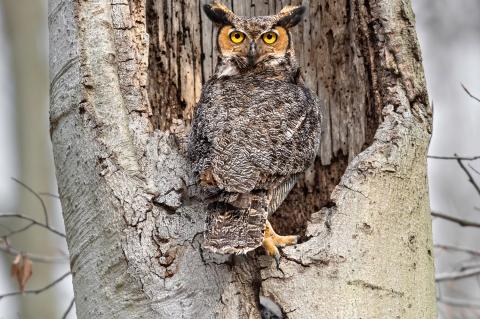During this Christmas/New Year’s interlude, I offer a fun challenge: Take a walk in the woods at night. Try it. You may hear a great-horned owl, who, despite the cold, is starting its courtship ritual. Its classic hooting call — offered in the cadence of “Who is awake? Me too!” — can be heard for miles, the song of the blue winter night.
Outdoors
 On the Wing: Christmas Bird Count Merry Indeed
On the Wing: Christmas Bird Count Merry IndeedCold and wind greeted the 45 participants of the 93rd Montauk Christmas Bird Count on Saturday, but the rough conditions didn’t stop them from tallying 131 different species, the highest total for the count in the last 10 years.
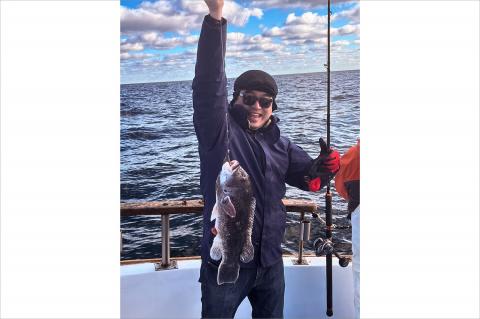 On the Water: Last Trip of 2022?
On the Water: Last Trip of 2022?To borrow a phrase from the game of baseball, the fishing season is now in the bottom of the ninth inning. Striped bass season concludes Dec. 15, blackfish season comes to an end seven days later, and Dec. 31 is the final day to retain black sea bass.
 On the Wing: Turkeys, Turkeys, Everywhere
On the Wing: Turkeys, Turkeys, EverywhereIt’s hard to decouple the turkey from Thanksgiving, but long before we paired turkeys with mashed potatoes and stuffing and turned them into a national symbol, they were going about their business, hanging out in gangs, flipping leaves, and browsing the ground for nuts.
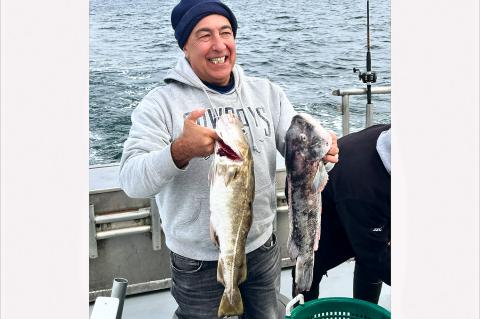 On the Water: The End Is Near
On the Water: The End Is NearAfter a mixed bag of a season, I happily climbed aboard the Elizabeth II, a charter boat out of the Montauk Marine Basin, for a trip for cod and bass, both of which I latched into within minutes.
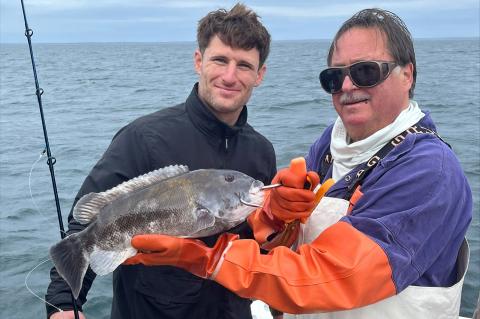 On the Water: A Return to Nomans
On the Water: A Return to NomansAbout 25 years ago, I recall jumping aboard the Viking Starship for the five-hour ride to Nomans (both the island and the area near Cuttyhunk) to target blackfish. Those trips were extremely popular, and one could retain 10 fish over 14 inches in length. Most of the time, the fishing was off-the-charts good.
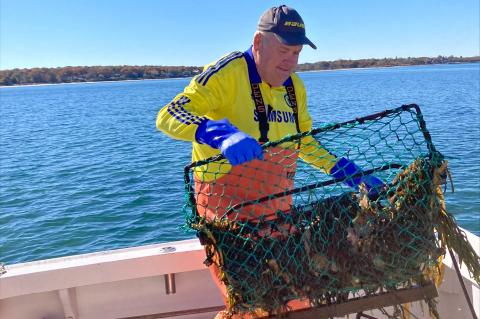 On the Water: Searching for Scallops
On the Water: Searching for ScallopsThe bay scallop season in waters under the East Hampton Town Trustees’ jurisdiction will open on Sunday at sunrise. Residents holding a town shellfish permit can continue to harvest them until sunset on March 31.
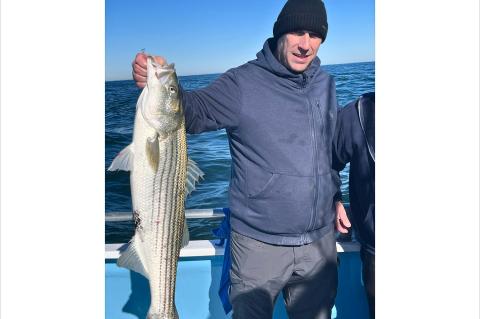 On the Water: Back on the Bones
On the Water: Back on the BonesChris Miller at Westlake Marina in Montauk confirmed that the fishing has been good on several fronts. “The bass fishing is holding up,” he said. “Sea bass too have been cooperating, but many are focused on blackfish, which has been very good since the season opened two weeks ago.”
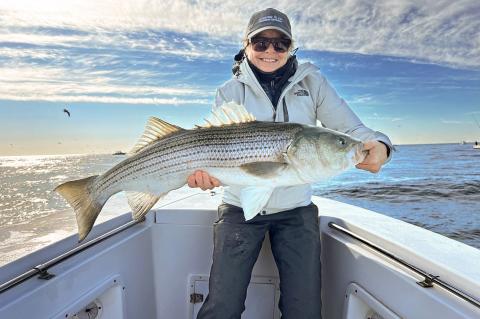 On the Water: Back Again for More
On the Water: Back Again for More"The blackfish bite has been very solid," said Ken Morse at Tight Lines Tackle in Sag Harbor. "Lots of small fish, but many are still catching their limits." Surfcasters along the ocean beaches are finding action too.
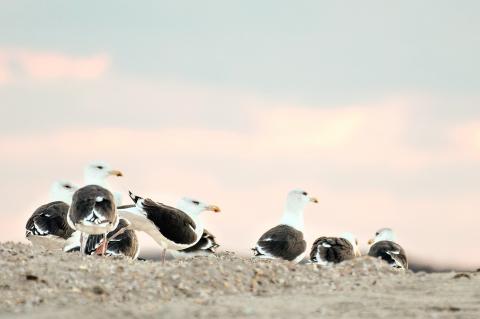 On the Wing: The State of the Birds, Good and Bad
On the Wing: The State of the Birds, Good and BadBird populations have declined steeply over the last 50 years, but the North American Bird Conservation Initiative's "State of the Birds 2022" report, published in early October, balanced the gloom with some success stories and offered strategies for future action which would "bring birds back."
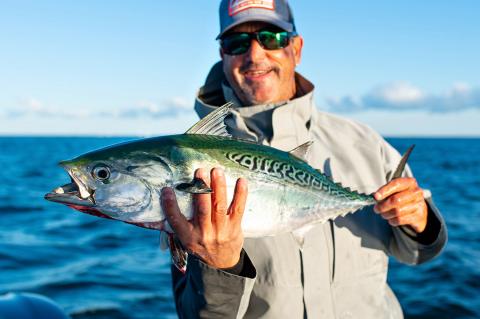 On the Water: Blackfish on the Hook
On the Water: Blackfish on the HookWhile the fishing for striped bass has been strong in Montauk, it was out of my reach, so I decided to take advantage of the sunny and windless conditions on Saturday morning for the opening of blackfish season in waters outside Long Island Sound.
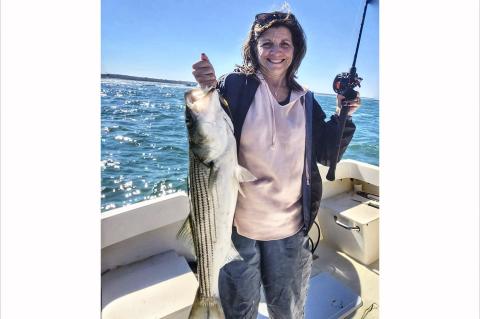 On the Water: Road Trip Cut Short
On the Water: Road Trip Cut ShortOur original 13-day vacation had already been cut short, then I tested positive for Covid. Hello to quarantine at home, which was still 420 miles away. For those not in quarantine, the fishing scene bounced back quite nicely after nearly a week of northeasterly wind and rain.
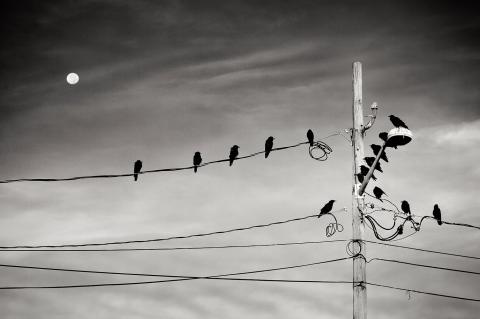 On the Wing: The Fish Crows Are Watching
On the Wing: The Fish Crows Are WatchingFirst light in Sag Harbor during autumn and the place belongs to the fish crows. They show up all at once, 100 landing in the big tree at M&T bank. As the day brightens, they spread out across the village into smaller groups. For a bird whose diet ranges from piping plover eggs to candy bars, Sag Harbor is a perfect foraging ground.
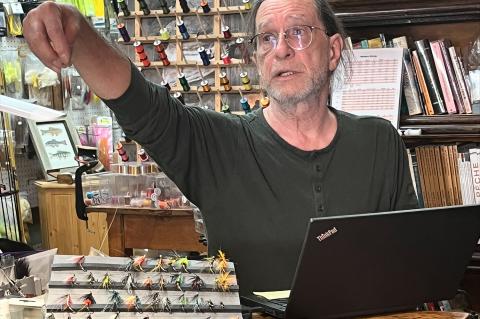 On the Water: On the Fly in Quebec
On the Water: On the Fly in QuebecThe popularity of fly-fishing exploded in Quebec when the movie “A River Runs Through It,” starring Brad Pitt, was released in 1992.
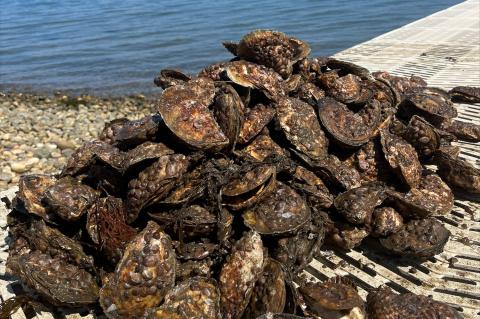 On the Water: Oysters Aplenty
On the Water: Oysters AplentyThe oysters I received 16 months ago, which barely filled a half-pint container at that point, had grown by Sept. 21 to over five inches in length in many cases. After cleaning, culling, and sorting, I had well over a bushel basket of tasty bivalves.
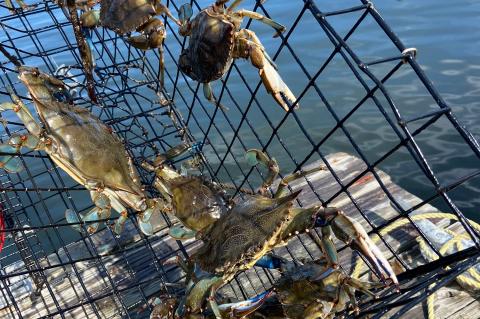 On the Water: Bringing in the Traps
On the Water: Bringing in the TrapsFor those lovers of crab, it’s not too late to catch some. Good quantities can still be had over the next few weeks in various creeks, coves, and harbors, before they burrow in the mud and sand for their winter slumber.
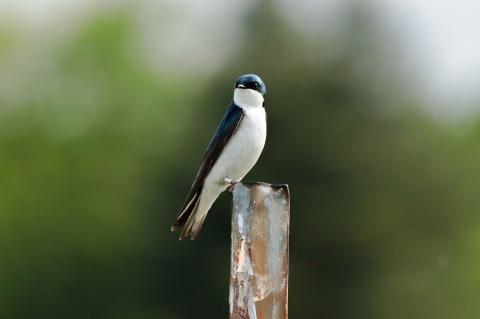 On the Wing: Tiny Swallows and Big Gulps
On the Wing: Tiny Swallows and Big GulpsA large group of tree swallows is called a gulp, which proves ornithologists are not without humor. Before the leaves change, gulps of swallows crowd our beaches. At Mecox Inlet, Sagaponack Pond, and the dunes that circle Napeague Harbor, hundreds, and sometimes thousands, of tree swallows collect.
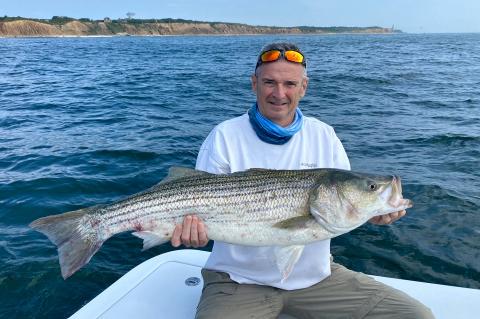 On the Water: Rest for the Weary
On the Water: Rest for the WearyThere are plenty of bluefish by Jessup’s Neck, porgy fishing is solid in many areas, including the east side of Gardiner’s Island. Sea bass too, are mixed in the catch in the deeper water. Farther offshore, tuna — bigeye, bluefin, and yellowfin — remain plentiful, and at the Cartwright grounds south of Montauk, as well as the area near the Block Island windmills, fluke fishing has been good of late.
 On the Wing: A Bird to Be Proud Of
On the Wing: A Bird to Be Proud OfAmerican oystercatchers, which congregate in the marshes of our barrier beaches before flying south, are about the size of crows, and stout, with heavy white bellies, chocolate-colored wings, and pale pinkish legs. They wear a black executioner’s hood and have a long blood-orange oyster knife of a bill and yellow eyes circled by red eye rings.
 On the Water: My Favorite Time
On the Water: My Favorite Time“Plenty of action around,” Sebastian Gorgone of Mrs. Sam's Bait and Tackle in East Hampton said of the local fishing scene. “You name it, you can probably catch it.”
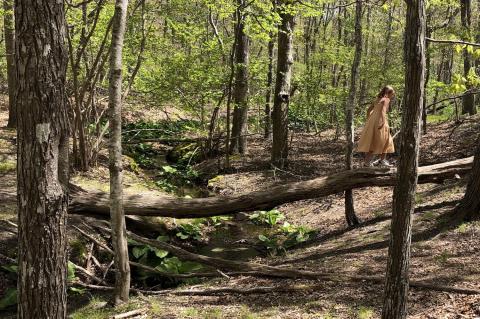 New Tools to Fight Lyme Are on the Horizon
New Tools to Fight Lyme Are on the HorizonThere is no vaccine to help prevent Lyme disease, which is transmitted through the bite of an infected deer tick, but that may soon change. In early August, the drug company Pfizer announced that it was seeking 6,000 people ages 5 and older to enroll in its phase 3 trial for a new Lyme vaccine. Separately, there's work underway using MRNA vaccine technology to make bites quickly itchy and red, so that they are easily noticed and the ticks can be removed before the transmit disease.
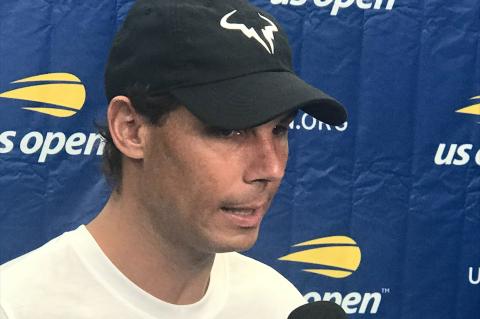 On the Water: Game, Set, Fish
On the Water: Game, Set, FishLucky enough to once again secure media credentials to cover the U.S. Open tennis tournament, I needed to do a bit of fishing myself to see who is really hooked on fishing.
 On the Water: Too Good to Pass Up
On the Water: Too Good to Pass Up“Lots of weakfish are around, plus there are porgies, blowfish, fluke, sea bass, snappers, kingfish, and even some black drum being caught,” reports Sebastian Gorgone of Mrs. Sam’s Tackle in East Hampton.
 It’s Another Disappointing Year for Scallops
It’s Another Disappointing Year for ScallopsIt's news that neither a commercial bayman nor those who enjoy bay scallops wanted to hear: For the fourth summer in a row, there has been a significant die-off of mature bay scallops in local waters.
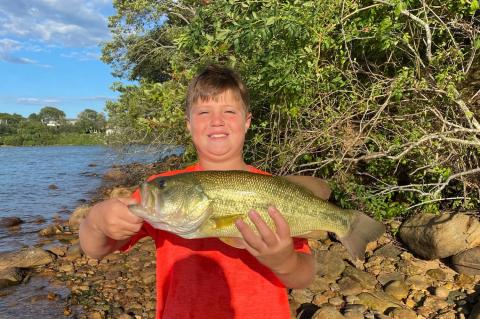 On the Water: A Downward Trend?
On the Water: A Downward Trend?For boat owners, the fact that diesel has dipped below $6 a gallon is welcome news, even if it's still expensive. As any owner of a power boat knows, fuel is just one part (actually a very small part) of the overall expense of the craft. Other expenditures like dockage, insurance, maintenance, and other factors, significantly overshadow the bill at the fuel dock.
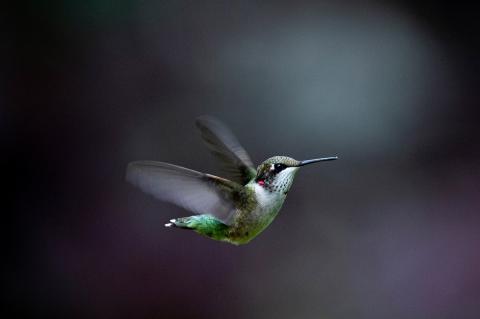 On the Wing: The Hummingbird’s Secrets
On the Wing: The Hummingbird’s SecretsDespite the confusion and tragedy of American life in 2022, they somehow return each spring; like flying foil-wrapped gifts come to life. And now, as early as this week, the males will depart from our area to begin their largely daytime migrations south. This is one of the most entertaining weeks to “feeder watch,” as they defend their last sips.
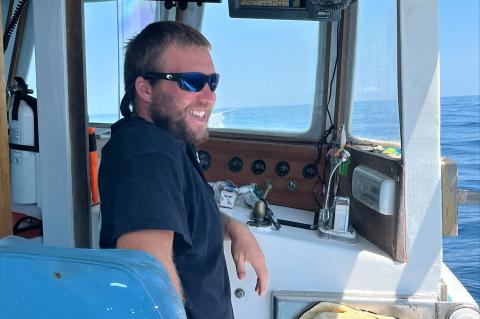 On the Water: A Simple Life
On the Water: A Simple LifeDespite the excessive-heat warning from the National Weather Service, our intended quarry was a species that’s more recognizably caught in the bone-chilling winds and cold of winter: the iconic codfish.
 On the Water: Suddenly August
On the Water: Suddenly August“The fluke bite has really picked up over the past week or so,” Paul Apostolides said. “Nice fish up to 10 pounds have been taken.”
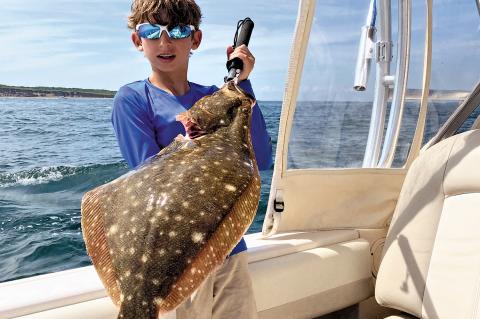 On the Water: The Banana Curse
On the Water: The Banana CurseFishermen can be a rather superstitious lot. Many have unusual habits or a routine that is indelibly ingrained based on past history — sometimes on fact but more likely fiction.
 On the Water: Off With the Old
On the Water: Off With the OldLobsters grow by molting. It's basically a process in which they struggle out of their old shells while simultaneously absorbing water which expands their body size. Marine scientists estimate that molting occurs about 25 times in the first five to seven years of a lobster's life. Once shedding their old shells, lobsters put on the feed bag in a big way.

